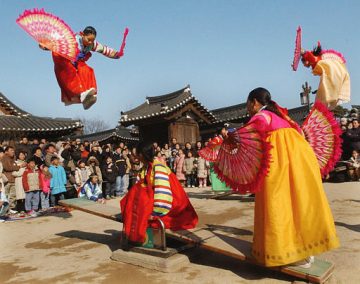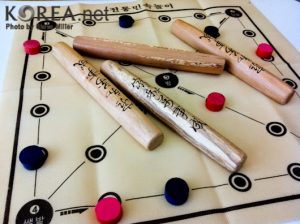
With the Lunar New Year officially coming to an end, we, as the Korean Culture Club, believe in the necessity of raising awareness about other cultures that celebrate this special holiday. South Korea has its own Lunar New Year customs, which differs from the Chinese traditions many at AISG are familiar with.
According to the records of ancient Korea, the lunar new year has been celebrated since 200 A.D. Among many stories regarding the origin of the Lunar New Year festival in Korea, one of the popular stories takes us back to the Three Kingdoms Period. The first record appeared in 261 A.D. when the king of Baekje received a new year congratulation from his retainer. Since then, an annual celebration took place on January 1 by the lunar calendar.
Due to the wide use of the lunar calendar in Korea, such as farming and “jesa” (memorial services for ancestors), the records of the lunar new year could be preserved throughout centuries.
On the first day of the lunar new year, Koreans eat a traditional dish named Tteok-Guk. This traditional dish is a rice-cake soup, with small, circle slices of rice cakes boiled in broth, alongside egg, seaweed, tofu, and minced beef. The rice cakes are sliced from Garae-tteok, the longer form before slicing, which symbolizes longevity and prosperity. The round slicing of the rice cakes represents the old Korean currency, carrying on the idea of financial and monetary stability and luck in the new year. Past ancestors of Korea would eat these rice cakes that looked like Yup-jeon and wished for economic prosperity for the new year.

One of the most traditional and favored activities during the Korean Lunar New Year is Yut-nori. This widely-known traditional game was invented during the Buyeo Period, where citizens of Buyeo created a board game that consisted of throwing four sticks into the air. The sticks have a chiseled side and a blank side, and the number of sticks that landed with the chiseled side facing up would determine the player’s progress in the game. The different sets of results represented different administrative bodies that governed Buyeo together.
During the Goryeo Period, the meaning of the sticks derived into the five most prominent domestic animals of Korea during the time period. This game is extremely popular amongst Korean citizens, and relatives will often gather up to collectively compete in this festive tradition. Possible reasons for Yut-nori’s fame are that it is the only Korean traditional board game that involves more than 2 people, and the rules are simple and easy to follow.
Yeonaligi (kite-flying), is also a popular activity during the Lunar New Year. This activity is quite similar to other kite-flying customs around the world, but the traditional kites of Korea have distinctive features and meanings. Although the exact origin of Korean kite-flying isn’t clarified, the first records of kite-flying were found during the Three Kingdoms Period. Kite-flying also has different purposes depending on which time of the year the event takes place. During the Lunar New Year, Koreans fly kites to make a New Year’s wish and float it up to the sky. The higher the kite flies, the more likely it that the wish would come true. The kite that is used to celebrate the Lunar New Year is in a rectangular form, and a hole is in the middle of the kite to let the airflow through.
New Year traditions vary depending on a country’s culture and society. In Korea, people gather together as a family to celebrate this three-day holiday, perform ancestral rites and play traditional games unique to Korea. Normally, the Korean citizens would be preparing to return to their hometowns and spend the holiday with their families, but this year the COVID-19 outbreak has discouraged many of the citizens from traveling from region to region. As a solution, many chose to spend their holidays separately, contacting their family members, friends, and loved ones digitally through social media.